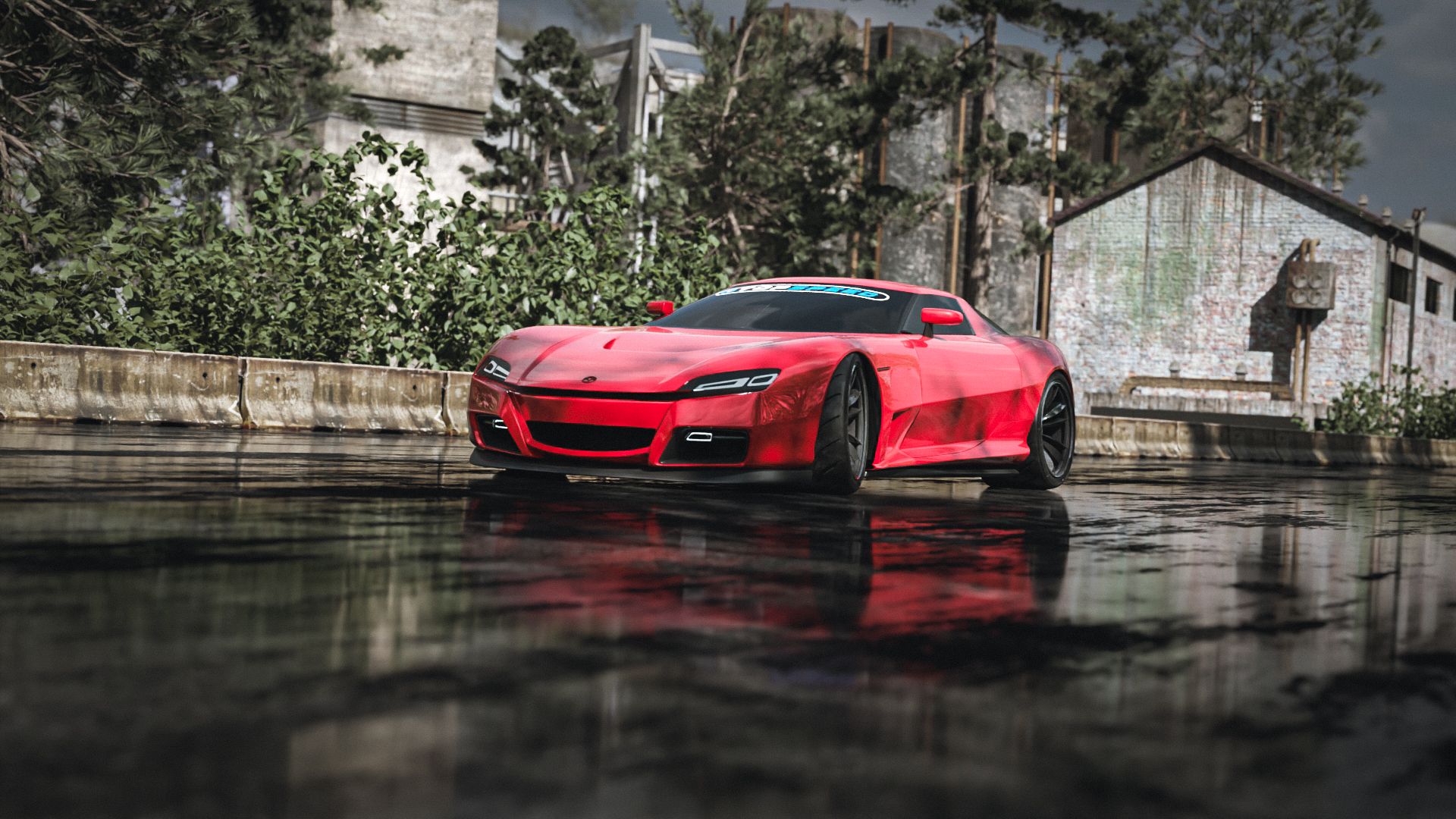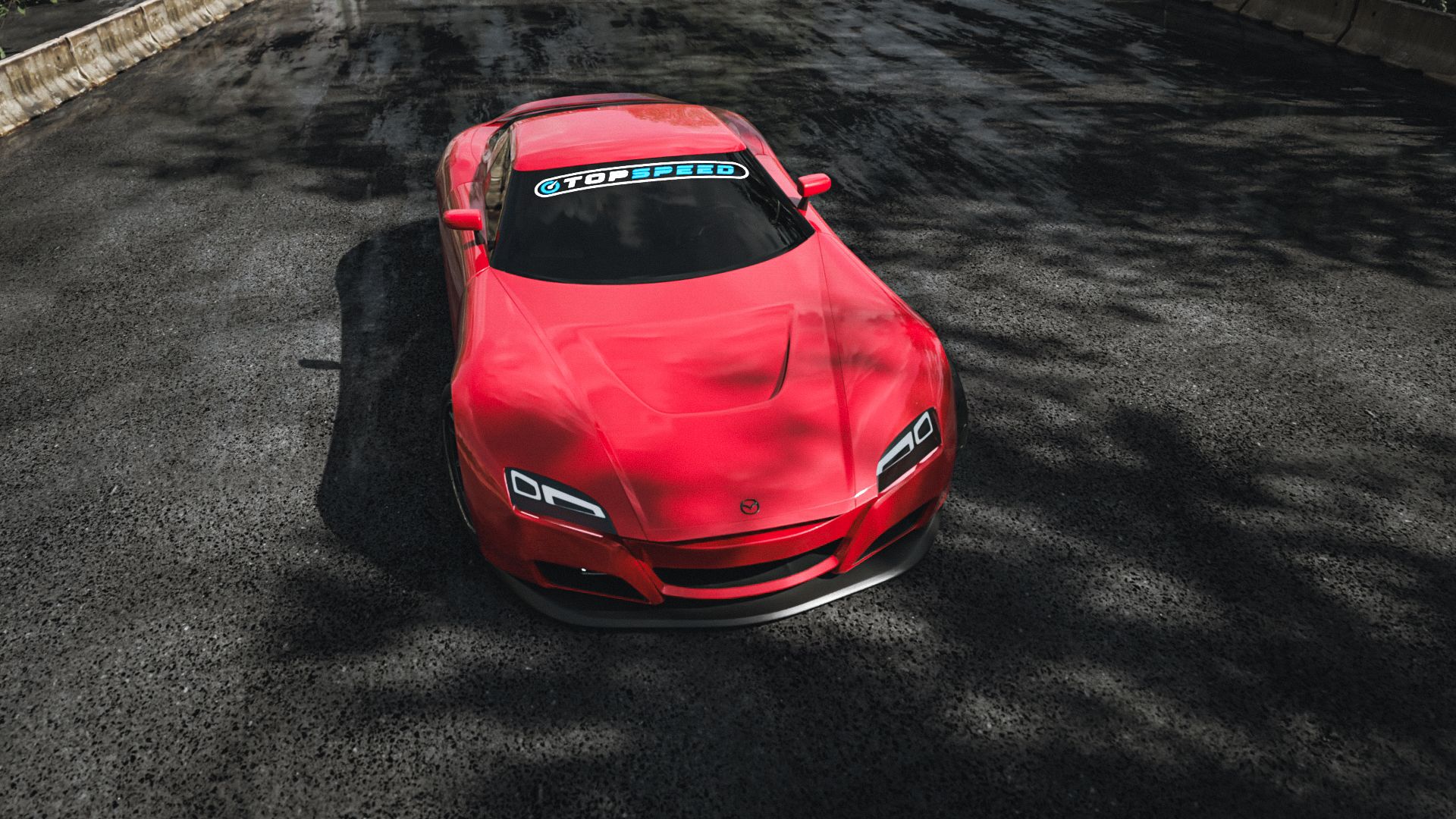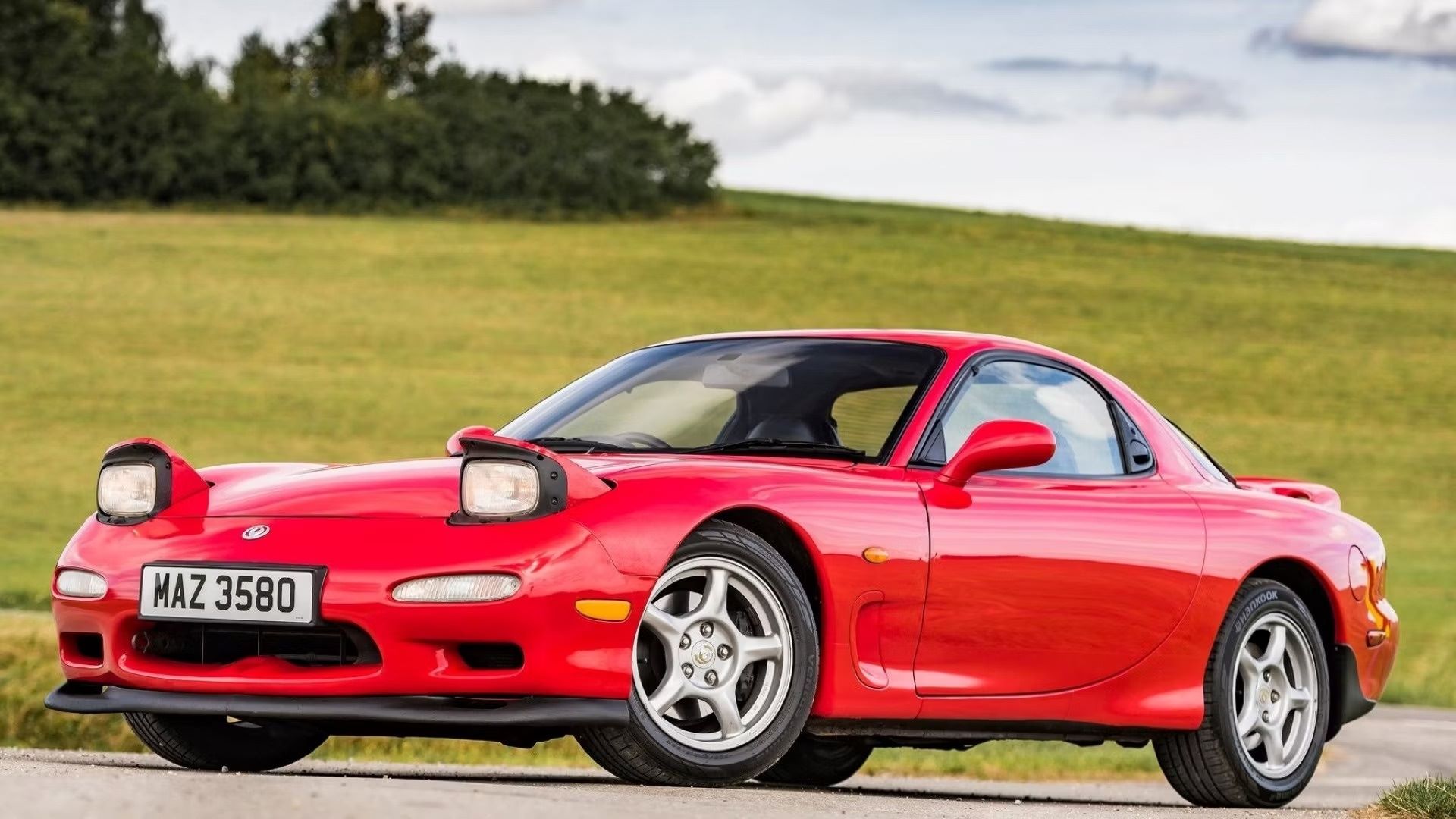These last few years, Mazda's RX badging has been making itself scarce, with the last model to carry it being the RX-8, until 2012. Unfortunately, the Mazda RX-8 failed to capitalize on its prestige - as evidenced by the poor sales - and consequently missed the opportunity to join its predecessor in the renowned pantheon of mythical Japanese sports cars. And thus, the void left by the departure of the emblematic RX-7 was never TRULY filled. That is when the RX-9 comes into play, with its unique styling, and its endless potential. If our 3D renditions are any good indication, then the upcoming Mazda RX-9 should definitely manage to capture the visual ethos of the brand. And yet, it is under the hood that the car is the most promising.
The RX-9 will likely include a hybrid powertrain, in consistency with Mazda's current electrification efforts. Despite being late to the EV party, Mazda is planning on going all-electric by 2030. As of late, the company has been teasing its fanbase with an electrified MX-5 Miata EV. The veteran automaker has also launched its all-electric MX-30, a crossover-SUV with a laughably low range of 100 miles. On top of achieving abysmally low sales, the MX-30 also failed to properly resuscitate the glory of the rotary engine that powered it. This dreadful scenario could soon be eclipsed by the next Rotary Experiment. To the delight of enthusiasts, the RX-9 is expected to feature an electrified tri-rotary engine under its lanky hood. The result? A possible chef d'oeuvre that could mark the next generation of cars.
The Mazda RX-9 Is A Future Kodo Design Masterpiece
Considering how the Mazda RX-9 has the potential to build a legacy of its own, we can expect it to be a mixture of the company’s finest design and engineering prowess. The exterior, as can be seen in our rendering, should thus be an abundant expression of Mazda's aesthetic vision, channeled through its trademarked Kodo Design. The result should then be a sleek-looking vehicle with a low ground clearance, as well as an elongated body enhanced by an imposing fascia and coupled with a lanky hood and elongated rear windshield. The Kodo Design, which was first introduced through the 2010 Shinari, and then found again on the Vision Coupe Concept, is further characterized by its lack of curves, which further accentuates the clean metal and imposing aura.
The interior should take a good old-fashioned driver-centric stance, commonly found in the marque’s sporty panoply. Instead of a full onslaught of technology, or a “futuristic” floating design, we can instead expect the RX-9 to feature a more sober cabin with a minimalist theme. The appearance should thus be a retro, yet timeless one, unconstrained by modern standards, massive touchscreens, and unnecessary clutter. This transcending aspect is commonly adopted by manufacturers who wish to produce industry icons rather than passing commodities. Similarly, the 2024 Bugatti Chiron has no infotainment screen to speak of, despite the $4 million price-tag.
Furthermore, the Mazda RX-9 should benefit from next-level handling abilities thanks to the G-Vectoring Technology. The result of years of engineering, Mazda’s G-Vectoring Control is an advanced form of chassis management tech that offers more precise maneuverability and improved turn-in performance, making it perfect for a sports car like the RX9.
An Electric Tri-Rotary Engine? You Read That Right!
There is currently a lot of mystique surrounding the powertrain of the future RX-7’s heir. In all likelihood, the RX-9 will march in the footsteps of its predecessor with an updated version of the rotary engine. Historically speaking, Wankel engines have been associated with poor reliability and low efficiency which essentially trumped their performance capabilities. After all, they’re also part of the reason why the iconic Mercedes C111 never made it past the concept phase. And yet, they’re not devoid of merits either. The Mazda RX-7 was allowed to stay fast and nimble due to its proper weight distribution, which was achieved thanks to the malleable nature of its rotary engine. It is also worth noting that the engine model never achieved its full potential under the company’s umbrella. In the past, environmental regulations have stopped Mazda from fully optimizing its rotary engine. However, the Hiroshima-based manufacturer seems to have figured things out with its new patent.
For the RX-9, Mazda is most likely planning a hybrid set-up with an electric tri-rotary engine, with two electric motors located at the front and another one placed at the back. While no figures have been divulged yet, we know that the electric motors at the front axles will generate a combined 46 horsepower (34 kilowatts), while the third electric motor will pack 36 horsepower (25 kilowatts). These three motors, with their combined 82 horsepower will work in cohesion with an ICE, in a P-HEV setup that should churn out a total of 350–400 horsepower. The SkyActiv technology will most likely be present at the rendezvous. Mazda’s trademarked SkyActiv refers to a number of technologies, ranging from gearbox to engines. The RX-9’s hybrid system should thus run on an e-Skyactiv-G 48-volt. The SkyActivBody is a framework, composed of a chassis and body, that helps achieve an eight-percent weight reduction, combined with 30 percent extra stiffness for better stability at high speeds.
The RX-7 Is An Industry Icon, Now Worth $50,000
Despite being discontinued over two decades ago, the legendary RX-7 is still missed to this day. The nostalgia is of course more than warranted. The notorious rotary-engine powered coupe enchanted aficionados across three generations thanks to its clean design, and pop-out headlights that served to charm rather than impress. The legendary sports-car was elegant, yet modest and straight to the point. Unlike its counterparts, it didn’t need to make an afterthought of practicality either, but instead offered above-average cargo space and extra storage units inside the rear seats. Unencumbered by gadgets and gimmicks, the RX-7 was far lighter than its peers, and boasted a 1000-pound weight advantage over the Mitsubishi 3000GT VR4.
Mazda RX-7 Specs
Engine | 13B-REW twin-turbo twin-rotor 1.3-liter |
Horsepower | 255 horsepower @ 6,500 RPM |
Torque | 217 pound-feet @ 5,000 RPM |
Transmission | Six-speed manual transmission Four-speed automatic transmission |
Drive Layout | Rear-wheel drive |
Acceleration (0-60mph) | 5.2 seconds |
As a result, the RX-7 was able to sprint to 60 mph in 5.2 seconds, which was impressive by the 1990s standards. The third-generation RX7 FD, despite only enjoying three model years in North America, was the most memorable of the lineage, and marked the nineties as part of the “Holy Trinity” of Japanese sport cars. The FD made history in more than one way, as it was the last car for sale in the US to incorporate a rotary engine. The RX-7 FD was equipped with a revolutionary twin-turbo 13B-REW, which completed thermodynamic cycles at 360 degrees, making it twice as fast as its piston counterpart. Despite its caveats, which later led to its demise, the rotary engine presented a number of advantages:
- Low vibrations
- Less moving parts than a piston engine, making it more reliable.
- 30 percent weight reduction
- It was almost immune to catastrophic failure
- Higher RPMs, resulting in more power.
Unfortunately, fuel-efficiency issues and reduced torque stained the reputation of the rotary engine. The RX-7 however, has kept a pristine image and only increased in value over the years. Nowadays, a used Mazda RX-7 can be sold for as much as $50,000. The staggering price tag is proof of the car’s lasting impact, and a reminder that its successor will have sizable shoes to fill. Yet if the speculations and guesses are any good indication, we can expect the RX-9 to successfully carry the vigor of the RX-7 into the future.



